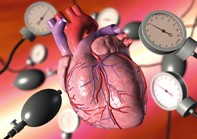Game changers in type 2 diabetes: after three antihypertensives, what’s next?
Hypertension is often difficult to control in patients with diabetes and in most cases an average of three to four different antihypertensive medications are required to achieve the target blood pressure of 130/80mmHg or below. The first three antihypertensive medications should be chosen because they have different mechanisms of action, the recommended choice for patients with type 2 diabetes being between angiotensin-converting enzyme (ACE) inhibitors/angiotensin II receptor antagonists, thiazide diuretics and dihydropyridine calcium channel blockers. Beta blockers are an alternative to calcium channel blockers in patients with a history of myocardial infarction, heart failure, coronary artery disease, or stable angina, because of their effect of reducing cardiovascular events. If control of hypertension is not achieved with three agents in combination, the next step is more difficult (for both doctor and patient), and the situation may indicate that there is some underlying cause or contributor to the hypertension.

